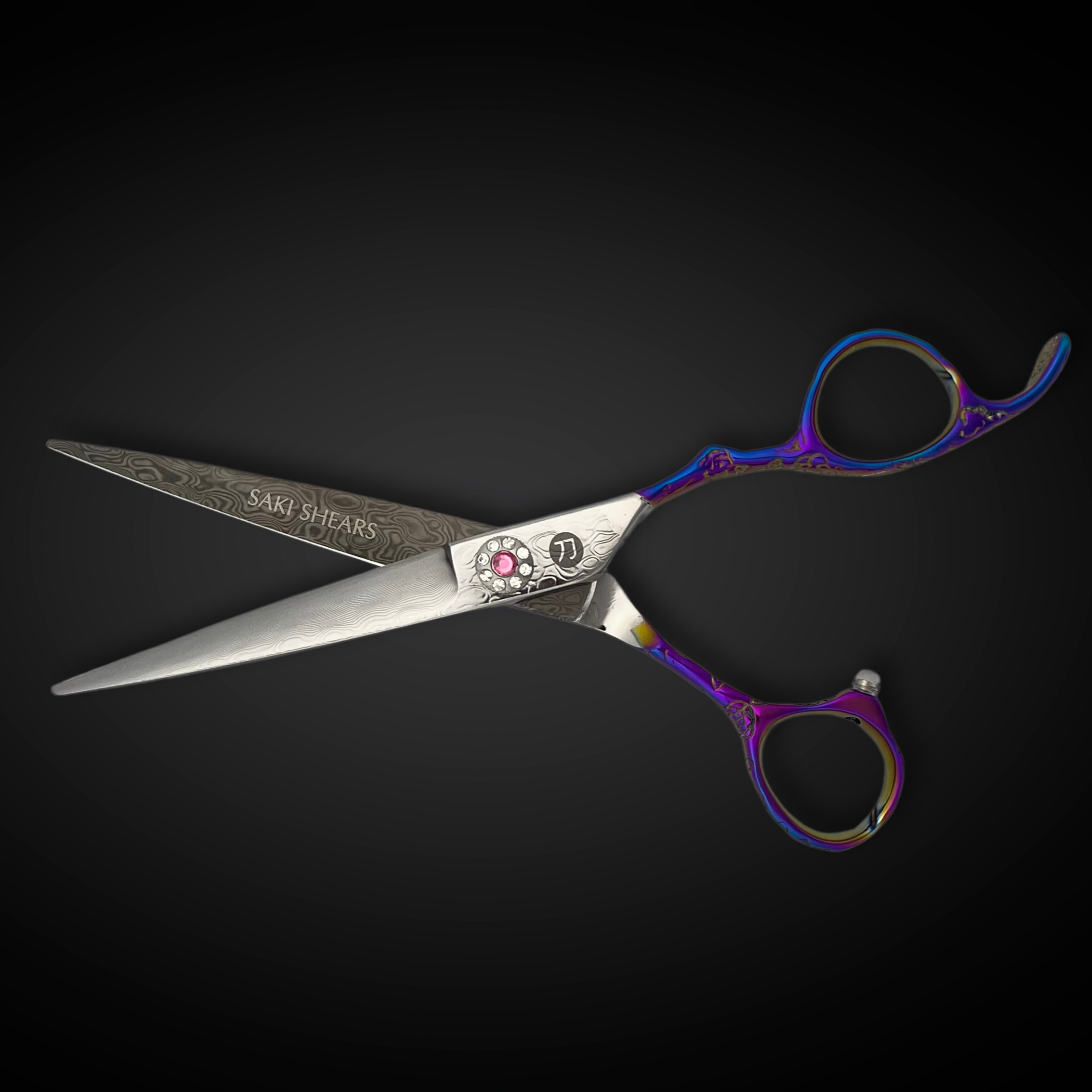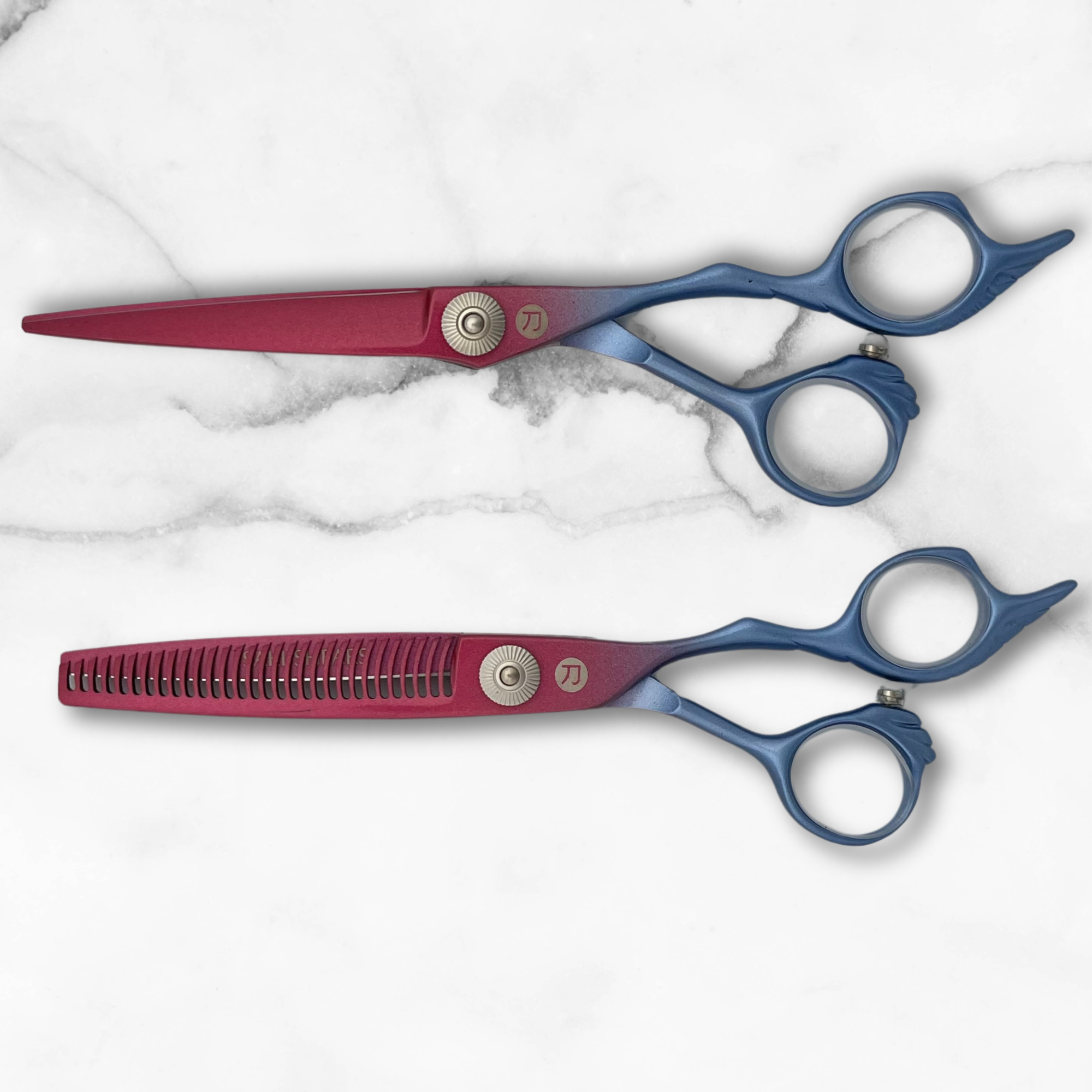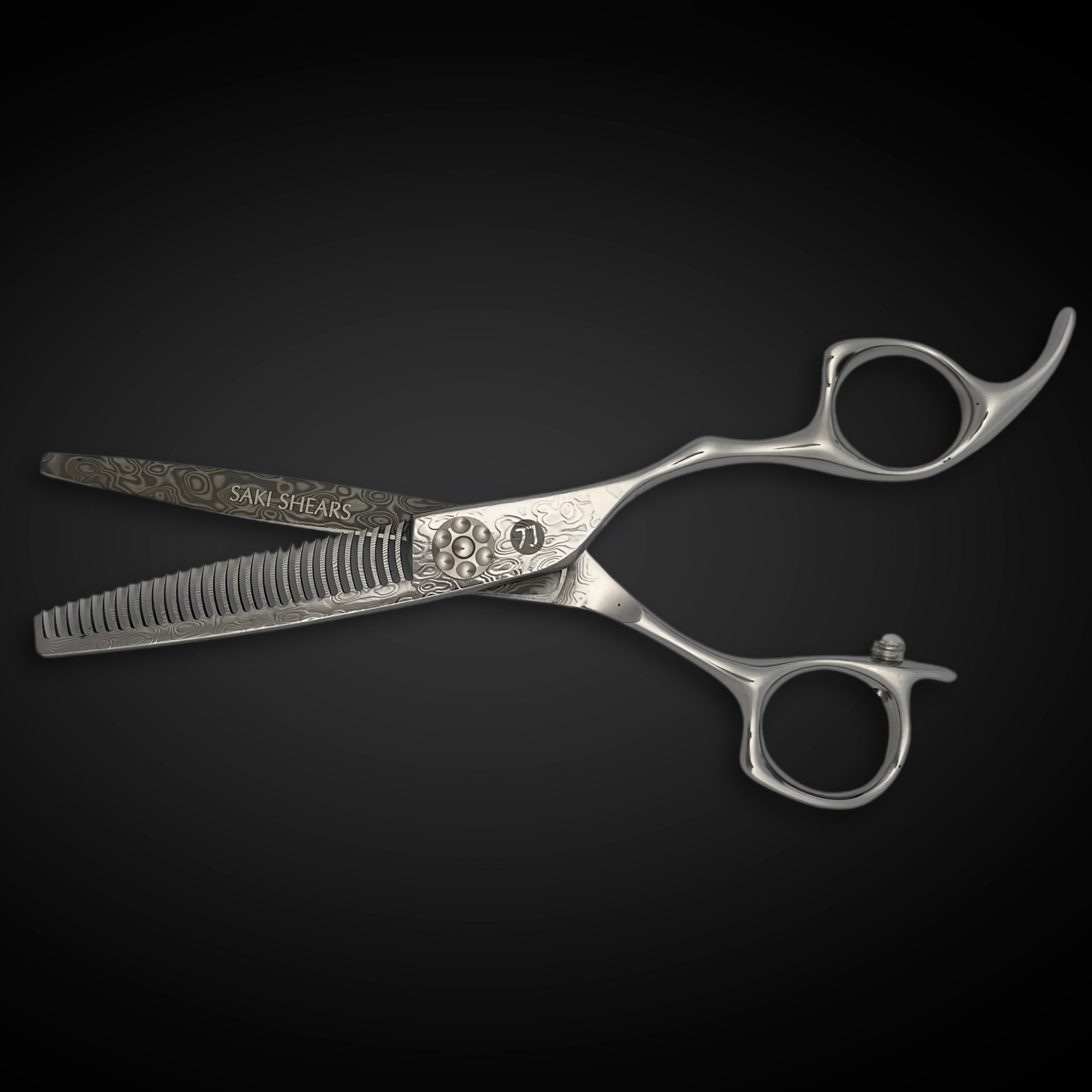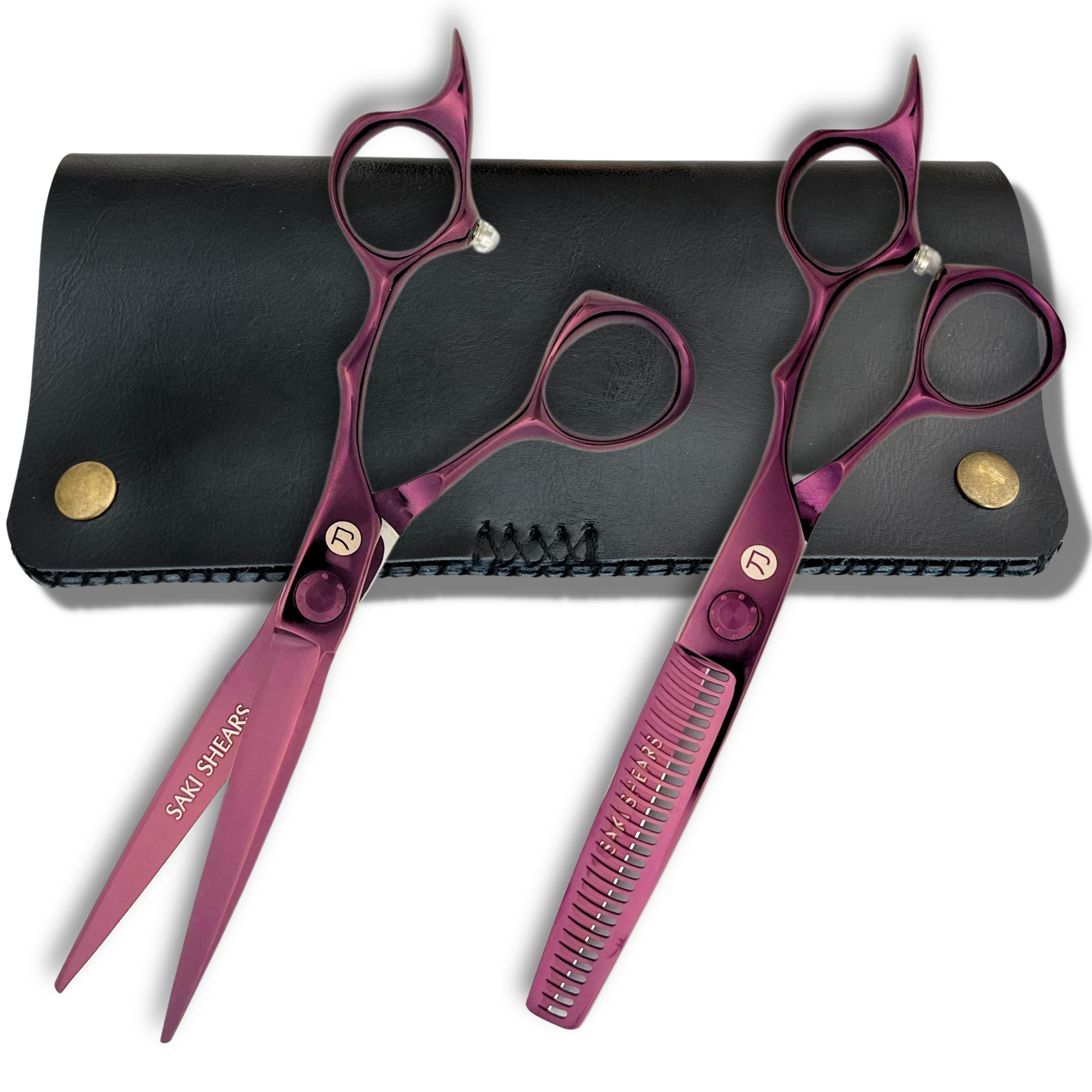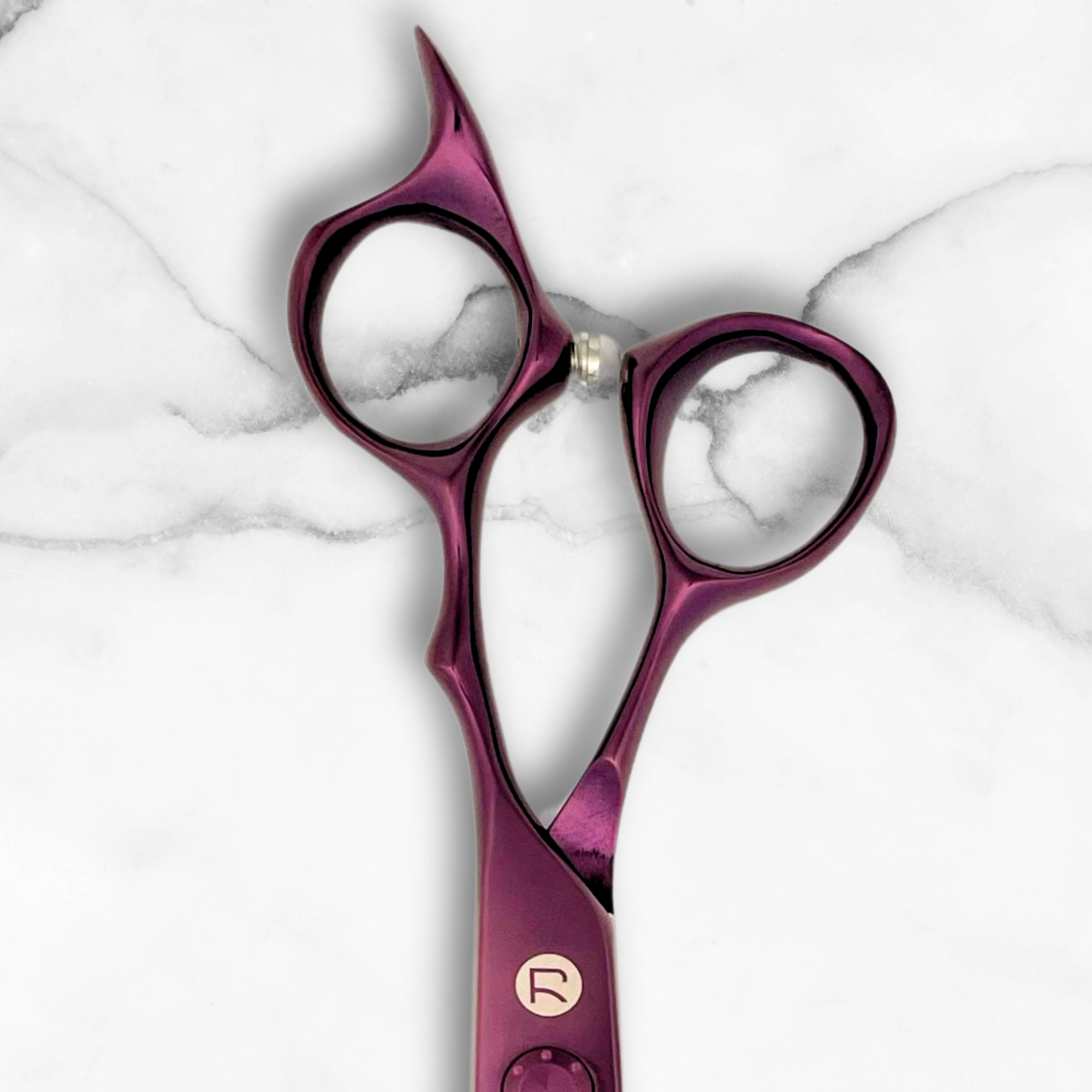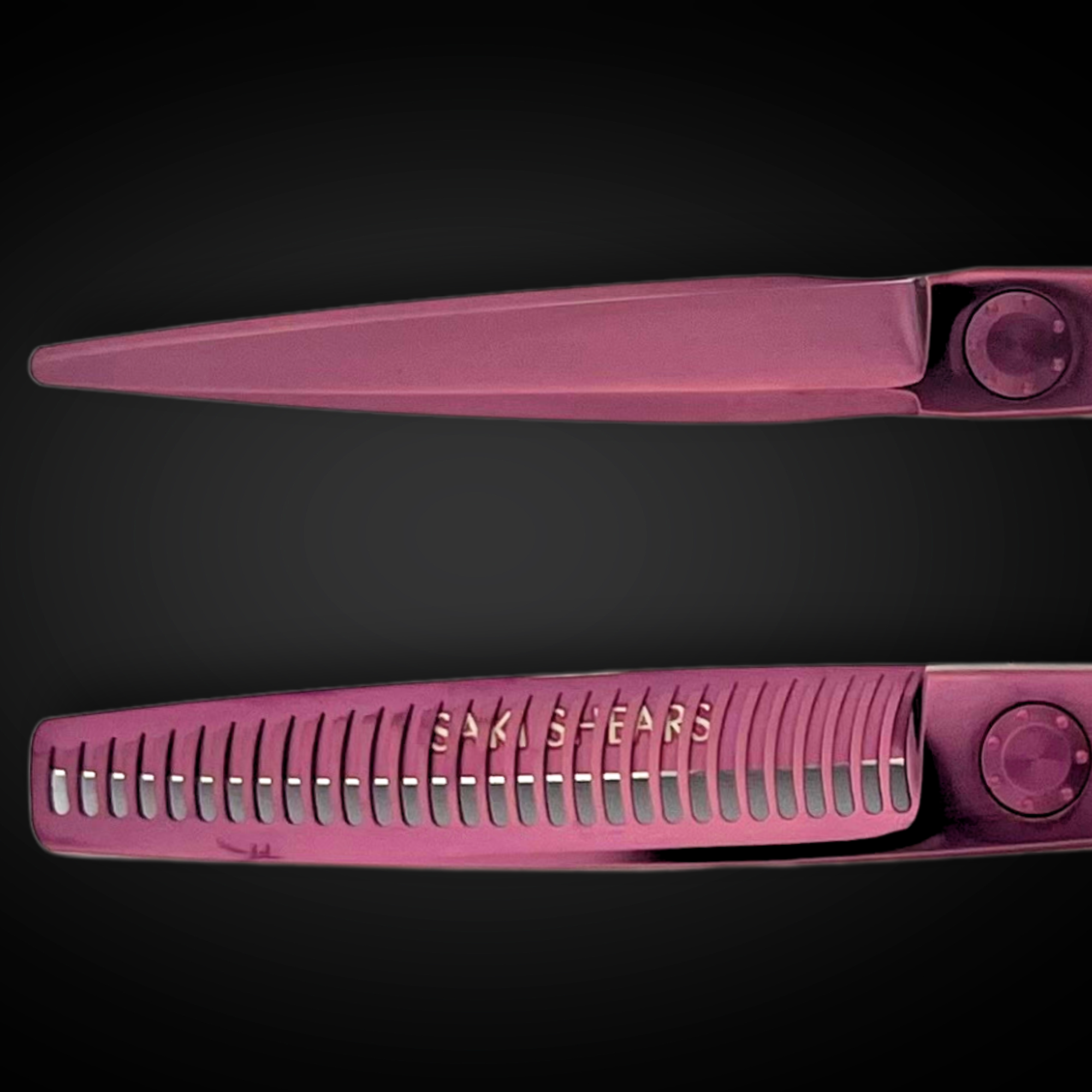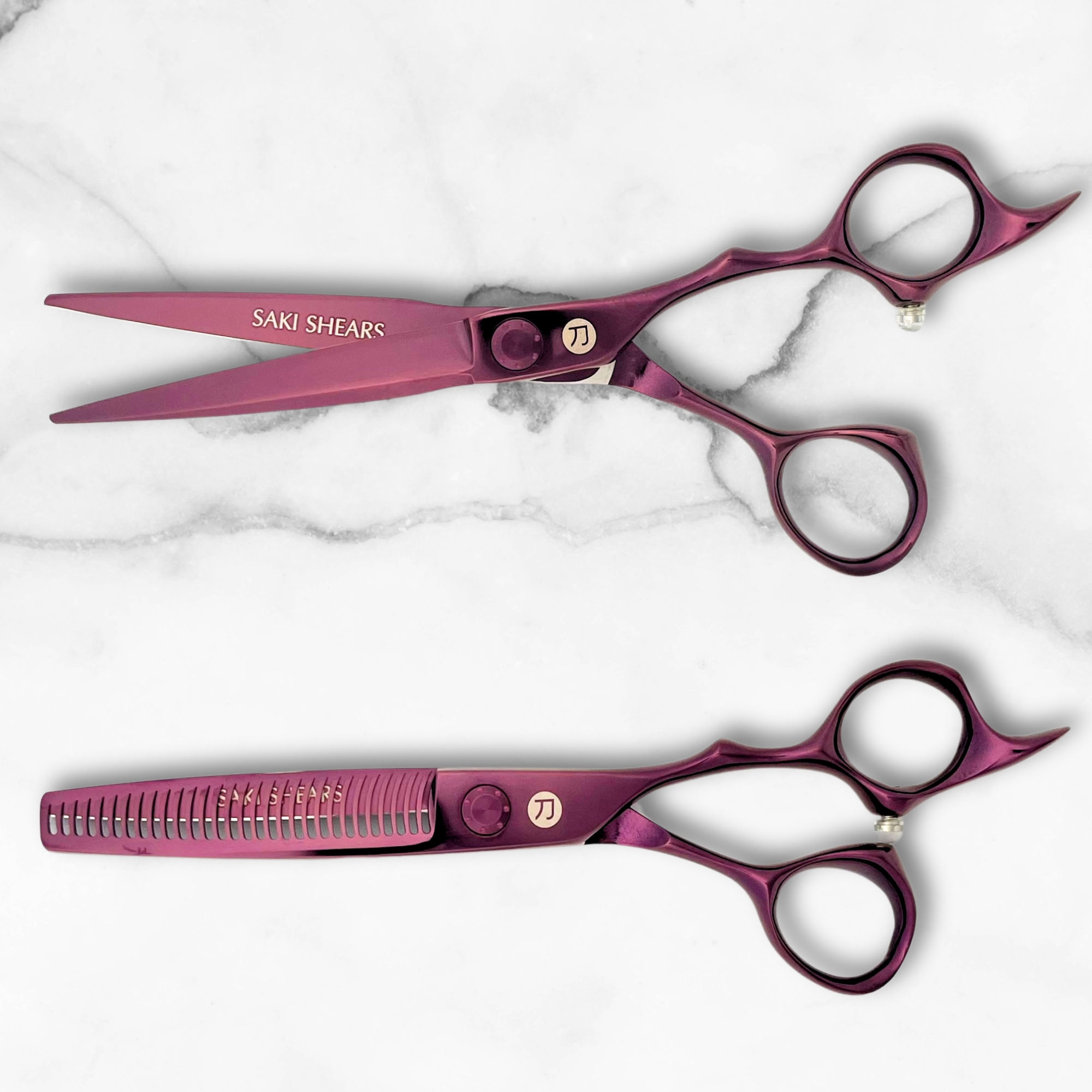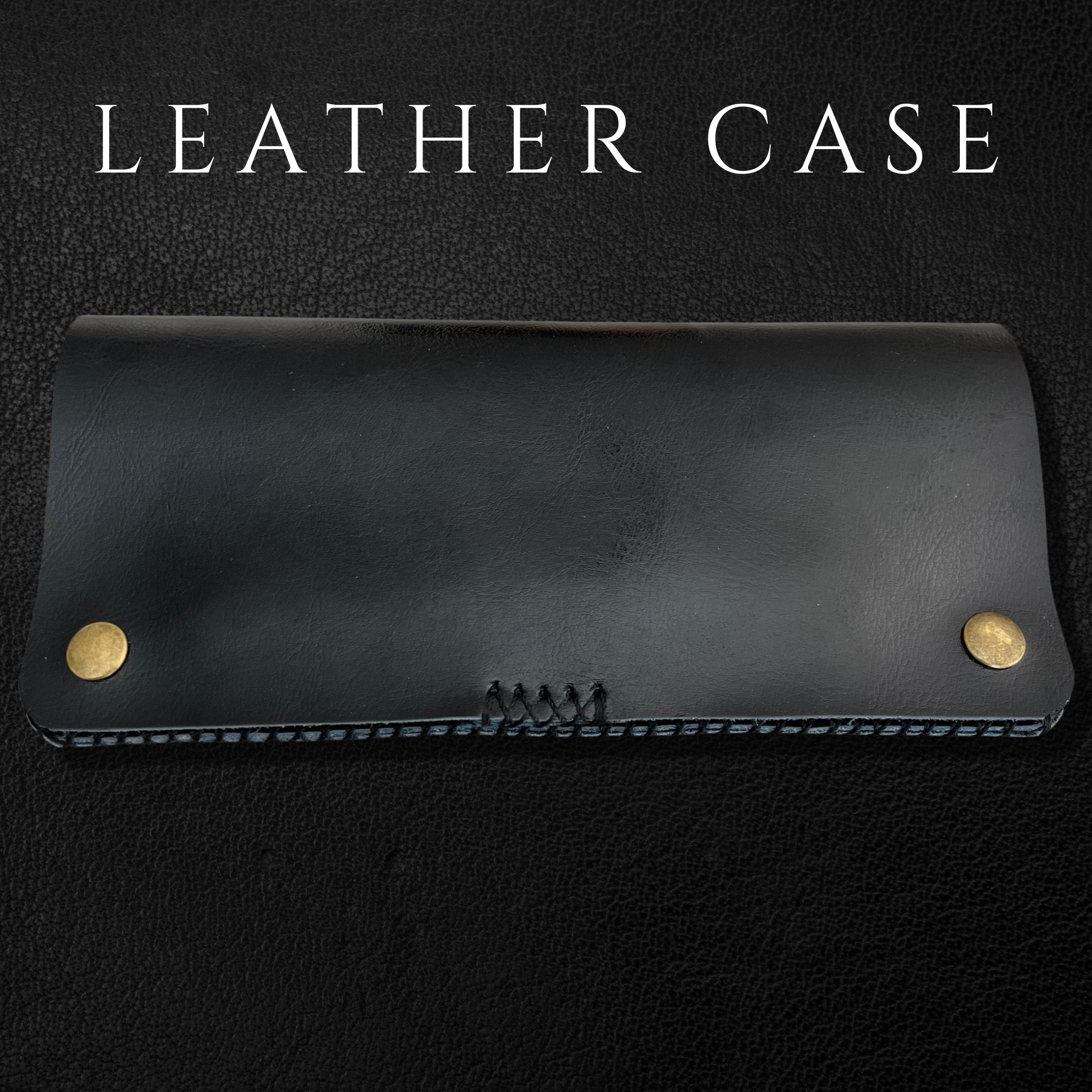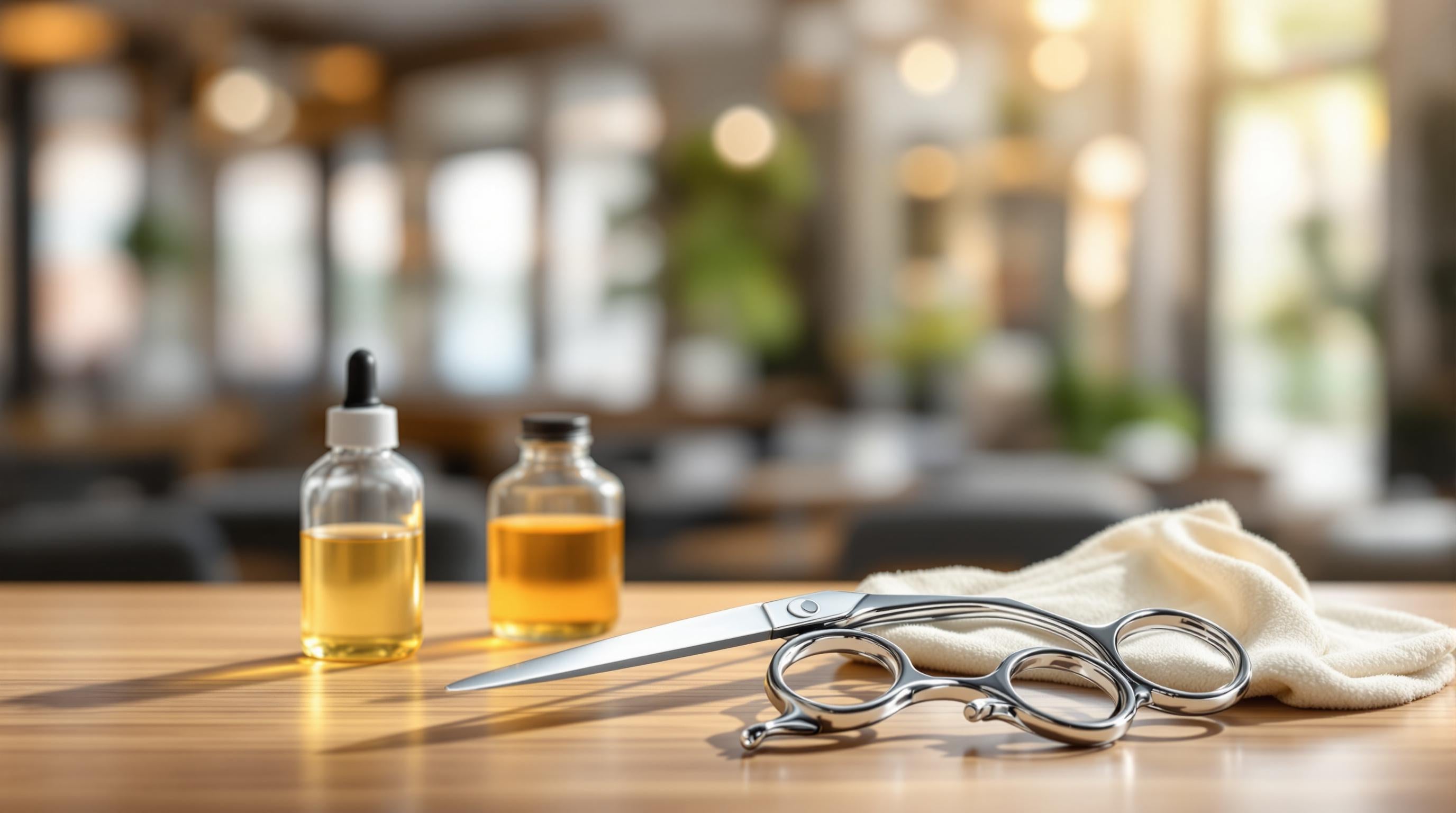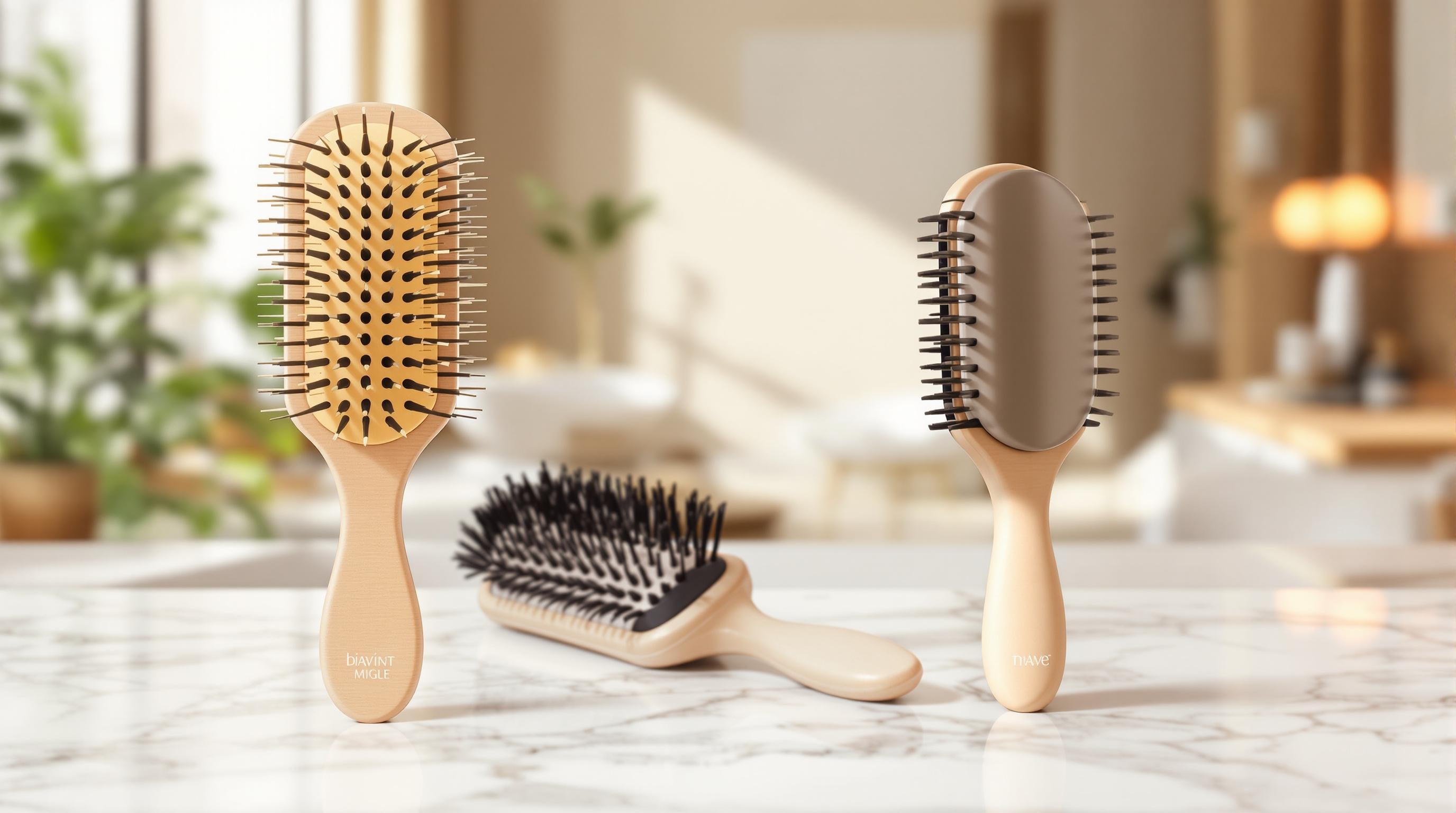The Ultimate Hair Brush Guide: Boar Bristle, Paddle, and Round Brushes Explained
Choosing the right hairbrush can transform your hair care routine. The wrong brush can cause damage, while the right one improves hair health, boosts shine, and makes styling easier. Here's a quick breakdown:
- Boar Bristle Brushes: Best for fine to medium hair. They distribute natural oils, reduce frizz, and enhance shine.
- Paddle Brushes: Ideal for detangling and smoothing long or thick hair without causing breakage.
- Round Brushes: Perfect for adding volume and creating curls or waves during blow-drying.
Quick Comparison
| Brush Type | Best For | Key Benefits |
|---|---|---|
| Boar Bristle | Fine to medium hair | Distributes oils, adds shine, reduces frizz |
| Paddle | Long, thick hair | Detangles, smooths, minimizes breakage |
| Round | All hair types | Adds volume, shapes curls and waves |
Keep reading for tips on choosing the right brush for your hair type, styling goals, and maintenance advice to keep your brushes in top shape.
I Tested 17 Hair Brushes to Find the BEST for Healthy Hair
Detailed Guide to Hair Brush Types
Boar Bristle Brushes: Features and Uses
Boar bristle brushes are known for their ability to improve hair's overall condition. The bristles grip individual strands, spreading natural oils (sebum) from the scalp down to the ends. This acts as a natural conditioner, leaving your hair smoother and shinier.
These brushes are great for reducing frizz and evenly distributing oils, which helps maintain a healthy scalp. They work especially well for fine to medium hair and are gentle enough for daily use across most hair types.
While boar bristle brushes are excellent for adding shine and smoothing, paddle brushes bring something different to the table.
Paddle Brushes: Ideal for Everyday Detangling
Paddle brushes are designed for longer hair, thanks to their wide, flat surface. This shape makes detangling more efficient while reducing strain on your scalp and hair. Many paddle brushes combine nylon and boar bristles, making them suitable for a variety of hair textures.
They’re perfect for detangling, smoothing wet or damp hair, and creating sleek, polished styles. Thick or long hair benefits the most from this brush type.
If you're aiming for volume or intricate styles, though, round brushes are the way to go.
Round Brushes: For Styling and Adding Volume
Round brushes are essential for creating blowouts and shaping hair with precision. The size of the barrel matters: smaller barrels are great for tight curls and root lift, while larger barrels add volume and smoothness, especially for long hair.
- Small barrels: Best for short hair, creating tight curls and lift.
- Medium barrels: Add body to mid-length hair.
- Large barrels: Smooth and add volume to longer hair.
To get the best results, start with hair that's about 80% dry. Aim the heat at the roots while lifting the brush upward to build volume. Pairing a round brush with a concentrator nozzle on your hairdryer helps direct heat more precisely, reducing frizz and giving a polished finish [7].
How to Pick the Best Hair Brush for You
Matching Brushes to Hair Types
The right brush can make a world of difference, depending on your hair type:
- Straight to slightly wavy hair: Paddle brushes are ideal for detangling and creating smooth, sleek looks, especially for longer lengths [1].
- Fine to medium-textured hair: Boar bristle brushes work wonders by boosting shine and reducing how often you need to wash your hair [5][6].
- Thick or coarse hair: Opt for brushes with a combination of boar and nylon bristles. This mix helps distribute natural oils while effectively detangling [3].
Choosing Brushes for Styling Goals
Your styling goals should guide your brush choice:
- For volume and body: A large round brush is perfect for lifting roots and adding movement.
- For smoothing and shine: Boar bristle brushes tame frizz and enhance shine.
- For detangling: Paddle brushes gently work through knots with minimal breakage.
- For curl definition: Small round brushes are great for shaping and defining curls.
Boar bristle brushes also stimulate the scalp, which can encourage healthy hair growth [2].
If adding volume is your main goal, round brushes are a must. Use larger barrels for loose waves and overall volume, while smaller barrels are better for creating defined curls and lifting roots [3].
For frequent blow-drying, choose a round brush with heat-resistant bristles to protect your hair and help achieve your desired look. Prefer air-drying? A paddle brush with flexible bristles gently detangles without disrupting your natural texture [4].
Taking care of your brush is just as important - proper maintenance will keep it working effectively and extend its life.
Tips for Using and Maintaining Hair Brushes
How to Use Round Brushes Effectively
Start by dividing your hair into sections that are easy to handle. The size of your round brush plays a big role in your results. Use the chart below to pick the right barrel size for your hair length:
| Hair Length | Barrel Size | Best For |
|---|---|---|
| Short | 1-1.5" | Curls, lift |
| Medium | 1.5-2" | Waves, volume |
| Long | 2-3" | Smooth, gentle bends |
"For a modern, undone wave, wrap hair around the brush in alternating directions and don't over-brush. The key is to create movement without perfect uniformity", advises celebrity stylist Anh Co Tran.
To get that salon finish, place the brush close to your roots and focus the heat there first. Slowly roll the brush down the length of your hair while following closely with the dryer. Keep the nozzle angled downward to avoid frizz. Once you're done with each section, use the cool shot on your dryer to lock in the style and add shine.
Once you're confident with styling, make sure your brushes stay in top shape by cleaning and storing them properly.
Cleaning and Storing Your Brushes
Keeping your brushes clean helps them last longer and work better. The cleaning method depends on the type of brush you’re using.
For boar bristle brushes, start by removing trapped hair with a comb. In a bowl, mix warm water with a bit of mild shampoo. Use a toothbrush to gently clean the bristles, being careful not to soak the cushion. Rinse thoroughly and let the brush air dry with the bristles facing down.
"A dirty hairbrush can redeposit oils, dead skin cells, and product residue back onto your hair and scalp, potentially leading to irritation and lackluster hair", explains trichologist Anabel Kingsley.
Proper storage also matters:
- Boar bristle brushes: Store upright with bristles facing up, and use a cover to keep them protected.
- Paddle brushes: Lay them flat to prevent bristles from bending.
- Round brushes: Store vertically or use protective sleeves when traveling.
"Invest in a brush stand or holder to keep your tools organized", recommends celebrity hairstylist Kristin Ess.
Final Thoughts on Hair Brushes
Key Points to Remember
When choosing a hairbrush, the type of bristles is a game-changer. Experts agree that understanding what each brush offers can help you build a routine that works for your hair.
| Brush Type | Best For | Key Benefits |
|---|---|---|
| Boar Bristle | Fine to medium hair | Distributes natural oils, adds shine |
| Paddle | Long, thick hair | Detangles and smooths |
| Round | All hair types | Adds volume and helps with styling |
"Mastering brush techniques unlocks styling potential", says Sam Villa, Global Artistic Ambassador for Redken.
Putting It All Together
Choosing the right brush isn’t just about styling - it’s also about keeping your hair healthy. Clean your brushes regularly to maintain their effectiveness, and use them according to their specific purpose for the best results.
Whether your goal is taming frizz, boosting volume, or enhancing your hair's shine, the right brush can make all the difference in achieving and maintaining your desired look.
Related Blog Posts
- 10 Reasons to Switch to a Paddle Brush with Genuine Boar Bristles
- Big Curls or Sleek Strands? The Best Ceramic Round Brush Sizes for Every Style
- Small vs. Large Ceramic Round Brushes: Which One Is Right for Your Hair Goals?
- Boar Bristle vs. Paddle vs. Round Brush: Which One Is Best for Your Hair Type?

